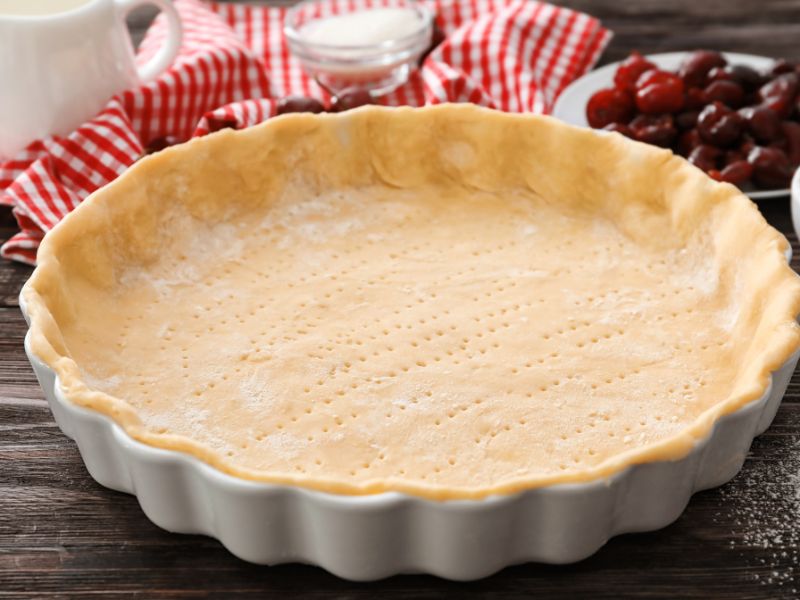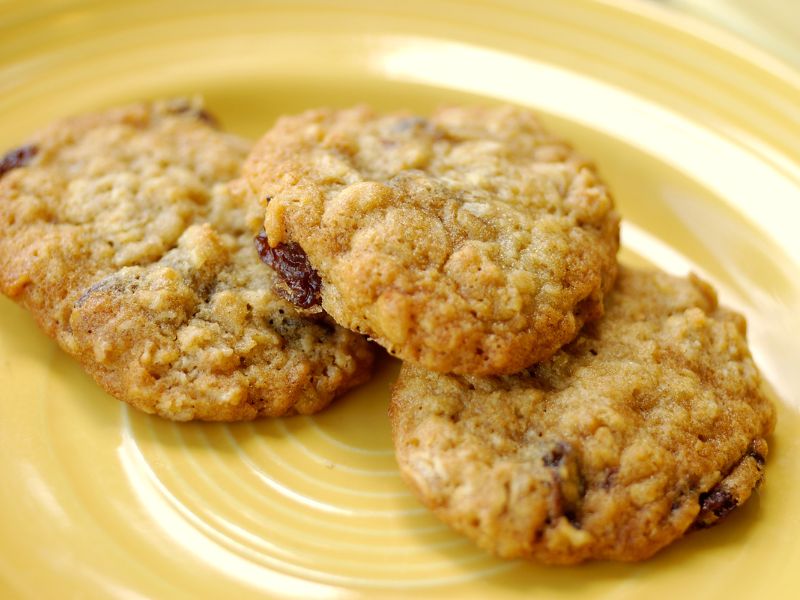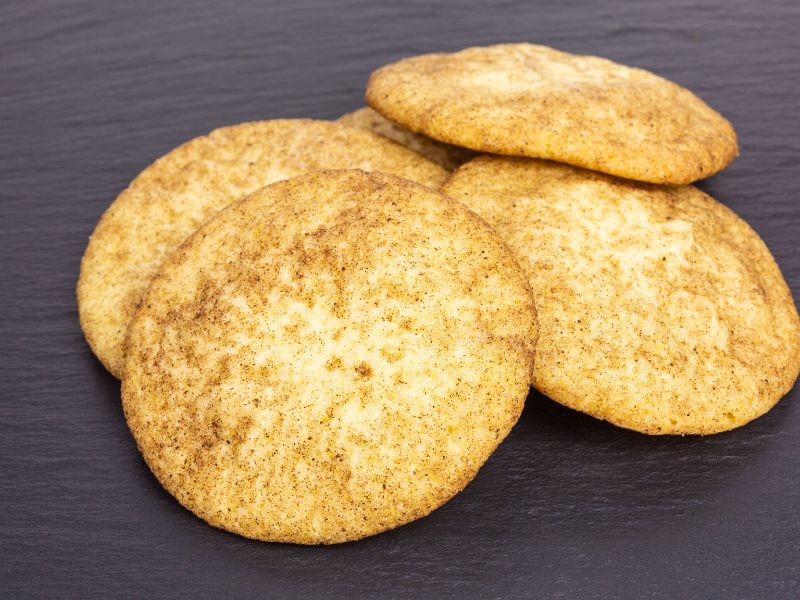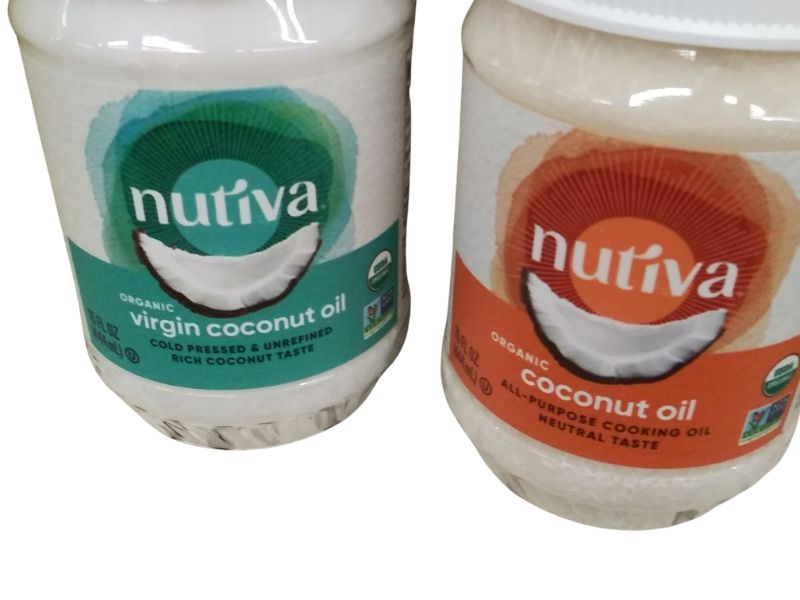When baking with solid coconut oil, the best-baked goods to make are pastries, cakes, muffins, cookies, and as a butter substitute in vegan baking. The solid form creates flaky layers in pie crusts and pastries, adds moisture and richness to cakes and muffins, and structure to cookies.
Pastries and Pie Crusts


A big part of the fun with pastries and pie crusts comes down to one word: flaky! Who doesn’t love that multi-layered, delicate texture in a hand pie or crispy crust? As home bakers, the main goal is figuring out how to get that light and tender, flaky pastry every time.
Well, you’ve found an ingredient that helps you nail it – solid coconut oil. That’s right! The same solid white stuff you find in jars works magic. The consistency when it’s cold makes all the difference. The solid bits of coconut oil easily create separate layers in the dough. As the heat of the oven melts those pieces, air pockets are left behind, leading to a good rise. That gives you the light, flaky texture you want in your pastries.
For pie dough, you can simply use solid coconut oil in place of shortening or lard. You measure it while it is cold to keep those solid coconut oil bits when you cut it into the dry ingredients. Come baking time, poof! Butter would melt too quickly. But those lingering solid bits of coconut oil hold their shape long enough between the layers of your dough to lift into pastry perfection.
Cakes and Muffins


Want to take your cakes and muffins to the next level? Start adding solid coconut oil when you bake. Using coconut oil instead of other fats does two great things. First, it makes cakes and muffins extra moist and tasty. Second, solid coconut oil helps cakes rise higher with an airy, soft crumb. And it keeps muffins super tender, bite after bite. Simply replace some or all the butter, oil, or shortening called for in your favorite recipes.
When making cakes, beating the coconut oil and sugar together is important. Mixing well helps whip tiny bubbles into the batter. When the cake bakes, those air pockets expand and make the cake rise higher with a fluffier crumb. Go ahead and swap solid coconut oil for butter or oil using a 1:1 ratio, whether you’re making pound cake, yellow cake, or spice cakes. That light coconut essence comes through while letting other flavors shine too.
For muffins, grate up frozen coconut oil so those solid shreds get worked into the batter. They hold onto moisture in a major way, guaranteeing a soft, tender crumb. At the same time, you get a texture upgrade and flavor infusion. Try coconut oil in place of vegetable oil or melted butter in recipes for blueberry muffins, pumpkin muffins, and other favorites.
If using virgin or unrefined coconut oil, which has a more pronounced coconut flavor, a little goes a long way. Start by swapping just 1-2 tablespoons of the butter or oil in a muffin recipe for an equal amount of solid coconut oil. For example, if a recipe calls for 1/4 cup vegetable oil, use 1-2 tablespoons coconut oil, then top off with 2-3 tablespoons vegetable oil to equal 1/4 cup total. This bit of unrefined coconut oil will provide enough coconut flavor while keeping it balanced. Refined coconut oil has a more subtle flavor so you can likely substitute at a full 1:1 ratio.
Cookies



Cookies come in all shapes, sizes, and textures – and coconut oil can help you achieve your ideal cookie style. Whether you prefer a crispy chocolate chip cookie, chewy oatmeal raisin, or soft baked snickerdoodle, that solid coconut oil has a role to play.
When you want to highlight texture, solid coconut oil is the go-to for providing structure.
For crisp cookies, replace 1/3 to 1/2 of the butter with coconut oil. For example, if a recipe calls for 6 Tbsp butter, use 4 Tbsp butter and 2 Tbsp coconut oil.
For chewy cookies, swap out half the butter for coconut oil. If the recipe uses 1 cup of butter, use 1/2 cup of butter and 1/2 cup of coconut oil instead.
The coconut oil gives crisp cookies a nice bite and chewy cookies that pleasant texture from the solid bits.
When it comes to flavor, substitute solid coconut oil for butter at a 1:1 ratio. For example, in oatmeal cookies with raisins or chocolate chunks, the coconut oil won’t be too obvious. But it adds a nice richness and enhances the other ingredients. If making coconut-centered cookies, use all or mostly coconut oil instead of butter. That really makes the coconut shine as the main flavor.
🌱 Vegan Baking Alternatives 🍰 |
||
|---|---|---|
| Traditional Ingredient | Vegan Alternative | Notes |
| Butter | Solid Coconut Oil | Perfect for flaky pastries and pie crusts, use as a 1:1 substitute. |
| Milk | Almond/Soy Milk | Great for cakes and muffins, enriches the flavor. |
| Eggs | Flaxseed Meal | Works well in cookies, use 1 tbsp flaxseed meal with 2.5 tbsp water to replace one egg. |
| Honey | Maple Syrup | Perfect for sweetening without altering the texture. |
| Brought to you by wearebaking.com | ||
When venturing into vegan baking, finding the right substitute for butter and other animal products can feel like an uphill battle. Enter solid coconut oil – a game changer of an ingredient for plant-based bakers! With its semi-solid state, neutral flavor profile of refined coconut oil, and high smoke point, it allows you to re-create the texture and taste of non-vegan baking.
Since solid coconut oil has the same texture as butter when chilled, you can use it as a 1:1 substitute in basics like vegan pie crust, vegan shortbread cookies, and vegan biscuits. It creates the rich flavor and tender, flaky layers bakers want.
Muffins and cakes also shine with coconut oil, giving moisture and texture better than other vegetable oils. Whip it into frosting also to make it nice and spreadable on cakes without losing any sweet taste.
While melted coconut oil works well in some recipes, the solid form better mimics chilled butter. Grate or cut chilled coconut oil into dry ingredients for the flakiest results.
👩🍳 Baking Success with Coconut Oil 🍰 |
|
|---|---|
| Tip | Explanation |
| Accurate Measuring | Use spoon or cup measures for precision. Slight overages can affect consistency. |
| Use Cold or Frozen | Grate frozen coconut oil for easy blending into batters and doughs. |
| Creaming Coconut Oil and Sugar | Beat well for 2-3 minutes to aerate the batter, crucial for rise and texture in cakes and cookies. |
| Adjusting Wet Ingredients | Reduce liquids slightly as coconut oil retains more moisture than butter. |
| Temperature Tweaks | Increase oven temperature by 25°F to compensate for coconut oil’s browning properties. |
| Brought to you by wearebaking.com | |
While substituting solid coconut oil can take your baking up a notch, here are a few tips for success.
When measuring out solid coconut oil, be accurate with your spoon or cup measures. The coconut oil melts and expands slightly, so packing it tightly or failing to level it off can throw off your ingredient ratios. Overdoing it leads to greasy baked goods.
Use cold or frozen coconut oil. Grate the frozen coconut oil with large holes on a box grater. These small shreds will blend into your batters and doughs smoothly before melting.
Because coconut oil doesn’t blend with sugar as easily as butter, make sure to cream the coconut oil and sugar well – beat for 2-3 minutes. This step is important when making cookies or cakes to build the structure necessary for rise and texture.
When using solid coconut oil in place of butter or other fats called for in a recipe, you’ll likely need to tweak a few things. First, coconut oil holds onto moisture more than butter So, you’ll need to reduce the amount of wet ingredients like milk or water by a tablespoon or two. And since coconut oil does not produce browning like dairy, increase the oven temperature to 25 degrees Fahrenheit.
Finally, the extra moisture may also influence rising; you may need a tad more baking powder or soda to get the lift needed.
Frequently Asked Questions
When using a new ingredient in baking, there are always questions that come up. Here I’ll tackle some frequently asked questions about baking with solid coconut oil to clear up any confusion:
Q: Can solid coconut oil be used in place of butter in any baking recipe?
With some adjustments, yes! Keep in mind coconut oil provides less sugar browning and browns faster than butter would. Adjust oven temp, moisture, and leaveners accordingly.
Q: Will my baked goods taste strongly of coconut when using solid coconut oil?
Generally not! Neutral, refined coconut oil has a very faint flavor. Just avoid virgin or extra virgin coconut oil, which has a stronger essence.
Q: How should I store solid coconut oil, and does it affect baking outcomes?
Store coconut oil jars at room temperature for a semi-solid state, or chill in the fridge for it to fully solidify. Freezing and grating makes for the easiest baking prep.
Q: Are there health benefits to baking with solid coconut oil?
Yes! Coconut oil contains beneficial fats. When you bake treats in moderation with this alternative fat, it can be an upgrade over butter or shortening.
More on the health benefits of coconut oil.
Key Learning Points
- Solid coconut oil adds a rich texture and subtle coconut flavor, enhancing certain baked goods.
- Ideal for recipes that benefit from its solid state at room temperature, such as pastries and pie crusts.
- A versatile substitute for butter and other fats in vegan and dairy-free recipes.
Have you baked with solid coconut oil before? I’d love to hear about your experience and results. What recipes will you be trying it in next? Please leave me a comment below.
And As Always
Keep On Baking!
Taianne
Share the Love

I’m Taianne, the owner and operator behind We Are Baking. Baking my first cake at age 11 hooked me on creating sweet treats. Though my interest faded during childhood, it was rekindled when I married my apple pie-loving husband. I love trying new recipes, tweaking classics, and helping others learn the science and art of baking. I started We Are Baking to share tips, tricks, and favorite recipes I’ve discovered over the years. When not in the kitchen, I enjoy spending time with family and friends. My goal is to inspire others to embrace their creativity through baking. Feel free to contact me with any questions!
Taianne@wearebaking.com

